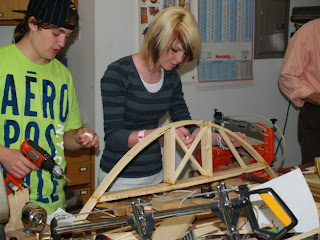I know some readers may regard what follows as wacky. I speak of the interconnectedness of all things. My wisdom of the hands project began in the recognition that woodworking was not an isolated activity, but one which drew upon and made connections with the whole of human culture, so instead of woodworking, and wood shop being irrelevant to our children's educations, it could become central. My program was designed to prove that point.
We know that we can regard each thing, each person, each object within the world as isolated, just as we can regard mathematics as being a discipline separate from all its diverse applications in physics, chemistry, art, music, or wood shop. But math has broader meaning than what can be recorded in a spread sheet, or a careful column of numbers added, multiplied, or divided and set in relation to each other or tabulated as fact. So it is. We see each thing distinctly as object, or on the other hand as a broad range of relationships between objects set in motion through time. One approach simplifies for the sake of convenience and standardization in instruction, but ignores the vast complexity of physical, emotional and cultural realities of being a child or adult in the real world.
Light can either be observed as photons, observed as tiny bursts of particle energy, or observed through its more relational attributes, as patterns of waves whose apparent form is dependent on the framework of the observer in relation to the light's source. Your assessment, is it this or is it that, is dependent entirely on your choice of tools through which you make your observations.
Just as in the observation of light, in learning and in education we can choose an objective framework that measures particles of learning, or we can choose a relational framework that ties the child to matters of community, character, family, nation, leading the child to a sense wholeness within that matrix. One method of approach can be seen curently in American education with the extreme focus on the use of standardized testing to measure learning just as one would record the arrival of photons of light on a photographic plate. The other framework for guiding education and learning was that described by Comenius, a reasoned and rational set of observations of children as they engaged in exploration of relationship to the physical world. Just as in the observation of light, we can choose to see learning in one way or the other. The choice of view is mutually exclusive. Children are either drawn into a world of wholeness, or something tragically less.
Comenious said the following about schools:
Artisans do not detain their apprentices with theories, but set them to do practical work at an early stage; thus they learn to forge by forging, to carve by carving, to paint by painting, and to dance by dancing. In schools, therefore, let the students learn to write by writing, to talk by talking, to sing by singing, and to reason by reasoning. In this way schools will become workshops humming with work, and students whose efforts prove successful will experience the truth of the proverb; "We give form to ourselves and to our materials at the same time."The interesting thing is that when children are directly engaged, hands-on, learning what seems relevant to them, forming strategic connections with all things, they learn more quickly, and to greatest lasting effect.
Today in the CSS wood shop, our high school students worked on their bridges, just as I am attempting to illustrate the essential bridge between mind and hand.
Make, fix and create...



The bridges are looking pretty interesting! How much research did students do on traditional structures?
ReplyDeleteMario
I wish we had been able to integrate more math into their designs. They reviewed a section of David Macaulay's CD, How things work, and reviewed a book on bridges. They also were told to examine some of the bridges that they are familiar with in the area, and we do have some nice ones, including the suspension bridge at Beaver. We have a variety of bridge designs over the lakes here, so how bridges look should be familiar to them. One student attempted to create a helix design, but bending interconnected spirals was a bit too complex.
ReplyDelete